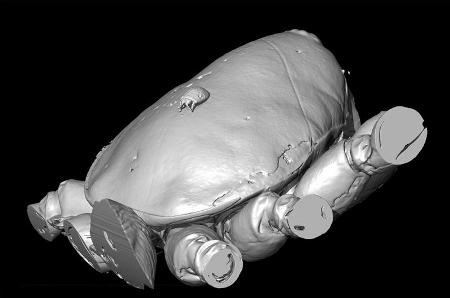A mite hitches a ride on the back of a spider and both get trapped inside Baltic amber. The mite is just 176 µm long, while the spider is 50 million years old, now.
 Prehistoric mite hitching a ride on 50 million year old spider as revealed by CT scanning technology
Prehistoric mite hitching a ride on 50 million year old spider as revealed by CT scanning technology
Researchers at the University of Manchester and in Berlin used phase contrast X-ray computed tomography (CT) scanning techniques to create three-dimensional images of the prehistoric mite hitching a ride on the spider. Mites that have hitchhiking or phoretic behavior use another animal belonging to a different species for moving to another environment. Amber fossils provide a great deal of information about organisms or insects that were caught in the fossil tree resin. They preserved the behavior of the insects or organisms just before their demise. The 'frozen behavior' provides information about interactions that took place in the ecosystems. Dr David Penney of the Faculty of Life Sciences stated that the present specimen was unique as it contained proof of direct interaction between different species.
Fossil study can provide clues as to when such phoretic behavior existed. The current X-ray CT scanning technology and sub-micron phase contrast system enabled extraordinary three-dimensional images of such specimens. Professor Phil Withers at the Manchester’s School of Materials, a co-author, stated that by using nanoCT lab systems, the researchers were stretching the limits of the boundaries of the CT scanning technique.
Humboldt University’s Dr Jason Dunlop stated that fossil mites were rare and that the new CT scan techniques were helping study the specimens like studying modern animals through scanning electron microscopes. The present specimen is possibly the smallest arthropod fossil that has been scanned using phase contrast X-ray CT scanning techniques.
Dr David Penney at the Faculty of Life Sciences said that the CT scan technique allowed the researchers to digitally dissect the mite from the spider and view the mite’s underside.